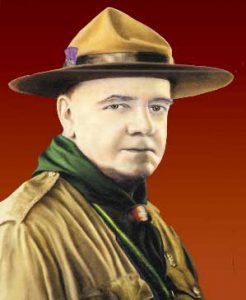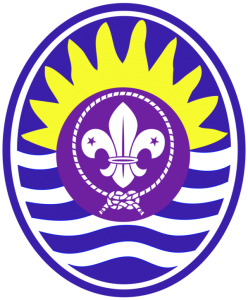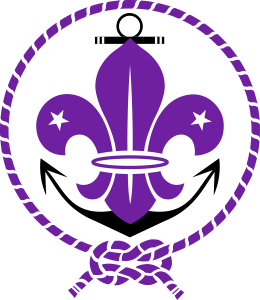What is Scouting
- Home
- what is Scouting?


The Scout Movement
What is Scouting?
The Dawn of Scouting

- The Scout Movement was founded by Lord Baden Powell in England in 1907.
- Lord Baden Powell was born on 22nd of February 1857 in London.
- After becoming a National Hero by victory over the famous siegj$ of Mafeking in 1903, Baden Powell found his ‘Aids to Scouting’ had become very popular among many boys and young men and their role-playing as army-scouts.
- He was then persuaded by various personalities across the country to write boys’ version of’Scouting for Boys’.
- His love for outdoor activities and multi-faceted talents led him to form Scouting.
- An experimental Camp was held by Baden Powell in 1907 at Brownsea Island in Poole Harbour, England, with 20 boys, and taught them camping, hiking, cooking, rowing, etc.
- The camp was a great success, and that was the beginning of Scouting.
- Today, the scouting is a worldwide movement with over 40 million Scouts, boys and girls, youth and adults in 216 countries and territories.
Aim in Scout Training …
“Here, then, lies the most important aim in the Scout training – to educate; not to instruct, mind you, but to educate, that is, to draw out the boy to learn for himself, of his own desire, the things that tend to build up character in him.”
(By Lord Baden Powell)
World Organisation of Scout Movement (WOSM)
The purpose of the Scout Movement is to contribute to the development of young people in achieving their full physical, intellectual, emotional, social and spiritual potentials as individuals, as responsible citizens and as members of their local, national and international communities.
Principles
The Scout Movement is based on the following principles:
• Duty to spiritual principles, loyalty to the religion that expresses them and acceptance of the duties resulting therefrom.
• Duty to others – Loyalty to one’s country in harmony with the promotion of local, national and international peace, understanding and cooperation. – Participation in the development of society with recognition and respect for the dignity of humanity and for the integrity of the natural world.
• Duty to self – Responsibility for the development of oneself.
Adherence to Scout Promise & Scout Law
All members of the Scout Movement are required to adhere to a Scout Promise and Law reflecting, in language appropriate to the culture and civilization of each National Scout Organization and approved by the World Organization, the principles of Duty to Religion, Duty to others and Duty to self, and inspired by the Promise and Law originally conceived by the Founder of the Scout Movement.
Versions of Scout Promise and Scout Law in Sri Lanka
- Scouting in Sri Lanka
- National Scout Headquarters
- Membership
- Scout Promise
- Scout Law
- World Scout Emblem
- Method

The Association became a member of the world Organisation of Scout Movement (WOSM) in 1953, and the ‘Boy Scouts Association Ceylon Branch’ was succeeded by the ‘Ceylon Boy Scouts Association’. This proclamation was made on 22nd of February 1953 in Galle by the Director of World Scout Bureau Colonel J.H. Wilson who graced the occasion.
On the 27th of March 1957, Ceylon Boy Scouts Council (Incorporation) Act No 13 was passed in the Parliament, legalizing ‘Ceylon Boy Scout Association’.
At present Sri Lanka Scout Association (SLSA) is governed by the Sri Lanka Scout Council.
Various community development projects and many activities are carried out by SLSA in collaboration with the government and non-governmental organisations.
Headquarter for Scouting was maintained in an old guard room from 1930 until a new Scout Headquarter was opened in 1945 at Lower Lake Road, Galle Face, Colombo. In 1965, Mr. Vincent Perera, the Mayor of Colombo, renamed the “Lower Lake Road” as “Baladaksha Mawatha”
In 1980, the Scout Headquarter was moved to Sir Chittampalam A. Gardiner Mawatha (formally Parsons Road) in Colombo 2, after construction of a new building. It was declared opened on May 14, 1980, by His Excellency J.R. Jayawardena, the President and Chief Scout of Sri Lanka. Very unfortunately, on 20th February 2009, and the National Headquarter building caused severe damages due to a terrorist air-attack.
On 2nd Sep 2020, foundation stone was laid for a new building with 7 stories at the same premises and the newly constructed National Headquarters was declared opened in 2011, and in operation until now.
- Singithi Scouts 5 to 7 years
- Cub Scouts 7 to 11 years
- Junior Scouts 10 ½ to 14 ½ years
- Senior Scouts 14 ½ to 18 years
- Rover Scouts 17 ½ to 24 years
They are active in different programme focus, and open to both girls and boys. Different criteria are specified in detail in the National Youth Programme, the official publication of syllabus.
The Youth programme has 6 main areas of activity namely:
- Commitment
- Culture
- Scoutcraft
- Health
- Society
- Adventure
On my Honour I promise
To do my best to do my duty to my religion and my Country
To help other people at all times
And to obey the Scout law
A scout is trustworthy
A scout is loyal
A scout is friendly and considerate
A scout is a brother to every other scout
A scout is courteous
A scout is kind
A scout is obedient
A scout is cheerful
A scout is thrifty
A scout is clean in thought word and deed
The World Scout Emblem is a symbol of belonging to the Scout Movement. It consists of a field of royal purple bearing the white fleur-de-lys surrounded by a white rope in a circle and a central reef knot at the bottom and is an essential element of the brand identity of the Scout Movement.
World Organisation of Scout Movement (WOSM)
- WOSM
- Purpose of World Organisation
- Organs of World Organisation
- World Regional Bodies
- Asia-Pacific Region
The organization of the Scout Movement at world level is governed by this Constitution under the title of “The World Organization of the Scout Movement”, hereinafter called the World Organization, as an independent, non-political, non-governmental organization.
Scouting is active in nearly every country engaging more than 57 million young people and volunteers worldwide. The World Organization of the Scout Movement is the largest international organisation for Scouting and recognises 173 National Scout Organizations as its members.
The purpose of the World Organization is to foster the Scout Movement throughout the world by:
(a) promoting unity and understanding of its purpose and principles,
(b) facilitating its expansion and development,
(c) maintaining its specific character.
The organs of the World Organization are:
(a) The World Scout Conference.
(b) The World Scout Committee.
(c) The World Scout Bureau
Regional Office
| Africa Region | Nairobi, Kenya | |
| Arab Region | Cairo, Egypt | |
| Asia Pacific Region | Manila, Philippines | |
| Eurasia Region | Kiev, Yalta-Gurzuf, Ukraine | |
| European Region | Geneva, Switzerland, and Brussels, Belgium | |
| Inter-American Region | Panama, Panama |
 The Asia-Pacific Scout Region is home to the largest number of Scouts in the world. Of the Movement’s over 57 million members, more than 35 million young people and over 220,000 adult volunteers are registered in Asia-Pacific.
The Asia-Pacific Scout Region is home to the largest number of Scouts in the world. Of the Movement’s over 57 million members, more than 35 million young people and over 220,000 adult volunteers are registered in Asia-Pacific.
As a branch of the World Organization of the Scout Movement, it fosters the Scout Movement in the region and supports 30 National Scout Organizations. The National Scout Organisation of Sri Lanka is a member of the Asia-Pacific Region.
More Information About APRScouting
- Brotherhood and friendship among the scouts all over the world
- Learning life-long skills and brighten up own talents
- Challenging activities such as camping, hiking, pioneering, mountaineering
- Molding youth as good citizens and future leaders
- Service to others without ignoring service to self
- Taking care of environment, needy and even animals and nature
- Working as a team and in small groups
The responsibility of training of Scouts in the unit level in accordance with the syllabus of Scout training is held by Scout Leader.
In order to do this training successfully there is a 6-phase training scheme for the Scout Leaders. On successful completion of Phase-1 training course, including the conference, the leader will be granted the ‘Letter of Authority’ which will enable him to be in-charge of the scout Troop for 2 years until he/she gets advanced training.
The Scout Leaders and Assistant Scout Leaders must be over 18 years of age to follow the Phase-1 Training Course.
Every Scout Group will have a Group Scout Leader (GSL) who will see to the overall management of the Units in the Group. A GSL must be at least 30 years of age to hold a warrant. A principal or a priest is exempted from this rule.
Boys or girls from 11 – 18 years age would be in the Scout Troop, thus giving a greater chance for Patrols to function properly and carry out their functions in a responsible manner.
It is more appropriate that Scouts below 15 years and over 15 years are divided into Patrols separately.
If girl members are in the Troop, it is more appropriate to have a separate unit for them in the same Troop and will meet up separately.
Boys or girls from 7 – 11 ½ years age would be in the Cub Pack, and their patrols will be known as ‘Sixes’.
Same as in a Scout Troop, the boys or girls from 17 ½ – 24 years age would be in the Rover Crew, thus giving a greater chance for Patrols known a ‘Clusters’ to function properly and carry out their functions in a responsible manner.
If girl members are in the Crew, there should be a separate unit for them (in the same Crew) and will meet up separately.
The Patrol System
An efficient working on Patrol System is very necessary in every Troop, Pack or Crew.
The Petrol system must function well if the Scouts are to carry out activities and work for their awards. It will take little time to function properly and the Scout Leader may have to guide the patrol system and Patrol activities.
The Patrol is a group of Scouts who get along together, enjoy being in together and engage in activities together. It is suitable to have 6 – 8 members in a Patrol and engage in activities together as a team.
Every Patrol has a Patrol Leader, who is a knowledgeable Scout with some experience, for the training of his Scouts and recommending them for the requirements of the Awards.
Patrol Leader will take an interest in the progress of every Scouting his Patrol including the progress of himself.
The Cub Six and Rover Cluster are the substitute terms for Patrols in Cub Section and Rover Section respectively, and the activities and responsibilities are similar to a Scout Petrol.
Records say that Sea Scouting has been in operation in Sri Lanka since 1932. Sri Lanka Navy provides the resources, facilities and training on sea activities at the request of the Scout Leaders through the District Commissioner.
SLSA organises orientation programs and workshops for Sea Scouts and prospective Leaders, with the support of Sri Lanka Navy when need arises. They undergo special training on navigation, sailing, technical part on boat mechanisms, etc.
Sea Scouts are following similar badge and activity schemes as scouts but with a special emphasis on sailing, canoeing, boating and water-based activities in the sea, rivers or lakes.
Each Patrol will choose a name by which it will be referred to. The Patrol could either use the names of birds or animals, or mostly in the Senior section, can choose men and women who are considered heroes.
Each Patrol will choose two colours but no two Patrol should have the same combination of colours.
This is common to all sections but in cub section colours are used as Petrol names whereas names of world famous personalities are used to identify Rover Clusters in the Rover section.
Sri Lanka Air force is the pioneer of staring Air Scouting in Sri Lanka. The First Air Scout troop 57th Colombo had been started in 1972 by Sri Lanka Air Force with the direction of then Commander of the Air Force Air Chief Marsha l Padi Mendis and first Group Scout Leader Wing Commander PT Silva. At present Sri Lanka Air Force Air Scout group has more than 1,500 Air Scouts comprising with 10 Air Scouts Troops. First Sri Lanka Air Rover crew stared in 2017 with 15 Air Rovers at Sri Lanka Air Force Base Rathmalana.
l Padi Mendis and first Group Scout Leader Wing Commander PT Silva. At present Sri Lanka Air Force Air Scout group has more than 1,500 Air Scouts comprising with 10 Air Scouts Troops. First Sri Lanka Air Rover crew stared in 2017 with 15 Air Rovers at Sri Lanka Air Force Base Rathmalana.
Air Scouts are being trained on aviation and flying-based activities with the support of Sri Lanka Air Force. In addition, Air Scouts follow the same Scouting activities and badge schemes as normal Scouts, Further, Air Scouts under go aeronautical and technical training of aircraft, Design Model Aircraft, Design UAVs, Design quadrocopters, Air Cargo Operation, Aircraft under wing operation and Airport management. Air Scouts have different uniform as Air Scouts in other countries.
There are claims that Major Baden Fletcher Smyth Baden–Powell, youngest brother of the founder of BP, Robert Baden–Powell and an aviator, first brought flying-based activities into Scouting. However, as late as July, 1932, Baden Baden-Powell wrote:
“…it has been suggested that Air Scouts should be organized in the same way as Sea Scouts.”
The level of knowledge of the Scouts for Awards in all sections is assessed as far as possible according to how they had taken part in Scout activities rather than as specific tests.

